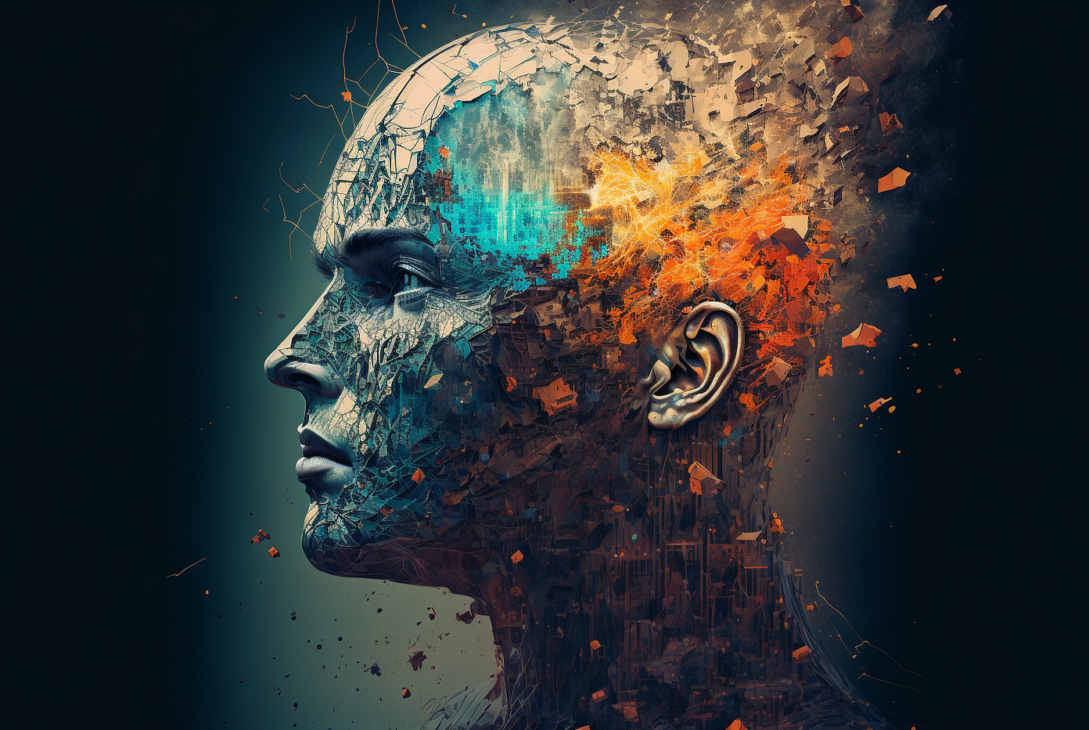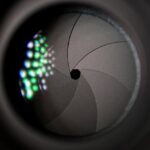Artificial intelligence has revolutionized many industries, including the art world. AI art, also known as generative art, is created using algorithms and machine learning. It is a form of computer art that is generated by entering prompts into an AI art generator, which employs large language models trained on millions of data points. These models reference this data to process a request and produce the desired result.
Understanding AI art requires an understanding of how machine learning algorithms work. Large sets of already-made art are used to teach these algorithms how to find patterns and styles, which are then used to generate new art. The process of creation is left to the machine, but humans may have collected the data or written instructions for the machine to use. The result is a unique piece of art that is created using a combination of human input and machine learning.
AI art has gained popularity in recent years, and many artists are using this technology to create new and innovative pieces. In this article, we will explore how AI art works, look at case studies in AI art, and answer some frequently asked questions about this emerging field.
Key Takeaways
- AI art is created using algorithms and machine learning.
- Large sets of already-made art are used to teach these algorithms how to find patterns and styles.
- AI art has gained popularity in recent years and many artists are using this technology to create new and innovative pieces.
Understanding AI Art
Artificial Intelligence in Art Creation
Artificial Intelligence (AI) has revolutionized the way we create art. AI art generators like DALL-E, DALL-E 2, GPT-3, and VQGAN+CLIP use generative AI and deep learning algorithms to create unique pieces of art. These algorithms work by finding patterns in large data sets, which are then used to generate new content. This process of training the algorithm is called “machine learning”.
AI Art Tools and Applications
AI art tools and applications are being used in various creative fields like digital art, photography, video, music, architecture, and more. AI art generators like DreamStudio, Craiyon, Artbreeder, Adobe Firefly, and StyleGAN are popular among illustrators, photographers, and designers. These tools allow the user to create photorealistic, hand-drawn, animated, or abstract art with ease.
Also read: A Comprehensive Guide to Tesla’s Camera System (2023)
The Role of AI in Modern and Digital Art
AI has played a significant role in modern and digital art. AI algorithms can create art that is more than just aesthetically pleasing. It can create art that is symbolic, rule-based, and technical. AI art can also generate shapes, brush strokes, and technical images that are not easily created by humans. AI art is not limited to visual art, it can also create music and video.
AI Art in the Public and Commercial Sphere
AI art is gaining popularity in the public and commercial sphere. Many museums like the Museum of Modern Art in London and San Francisco have featured AI art in their exhibitions. Social media platforms like Instagram have become a hub for AI art. AI art is also being used in advertising and marketing campaigns. However, the use of AI art raises concerns about copyright law and ownership of the art.
The Future of AI Art
The future of AI art is exciting and unpredictable. Researchers are exploring new ways to use AI in art creation. AI art generators like Stable Diffusion and Image-Gen are using deep neural networks and convolutional neural networks to create more complex and realistic images. Artists like Refik Anadol and Sougwen Chung are experimenting with robotic arms to create art. The future of AI art is not limited to creating art, but also in prototyping and exploring new creative fields.
In conclusion, AI art is a rapidly growing field that is changing the way we create and appreciate art. AI art generators, neural networks, and machine learning algorithms are being used to create unique and innovative pieces of art. AI art is not limited to visual art but can also create music and video. The future of AI art is exciting and unpredictable, and we can’t wait to see what the future holds.
Case Studies in AI Art

We will now explore some fascinating case studies in AI art that showcase the immense potential of artificial intelligence in generating stunning and thought-provoking pieces of art.
Exploring AI Art with DALL-E
DALL-E is a neural network-based image generation model developed by OpenAI. It uses a GAN architecture to generate images from natural language prompts. DALL-E 2, the latest version of the model, can generate high-quality images of objects and scenes that do not even exist in the real world. Artists and designers can use DALL-E to generate unique and creative visuals for their projects.
The Story of Edmond de Belamy
Edmond de Belamy is a portrait painting created by the French art collective Obvious using a GAN algorithm. The painting was sold for a whopping $432,500 at Christie’s auction house in 2018, making it the first AI-generated artwork to be sold at a major auction. While the painting was created by a machine, it was the result of a collaborative effort between the algorithm and the artists who trained it. The painting sparked a debate about copyright law and the role of AI in art.
The Creative Journey of Sougwen Chung
Sougwen Chung is a multidisciplinary artist who uses AI and robotics in her creative process. She has worked with a robotic arm to create stunning artworks that blend traditional art techniques with modern technology. Chung believes that AI and robotics can aid artists in their creative journey by providing new tools and mediums for self-expression. She also stresses the importance of maintaining a balance between the human touch and the machine-generated elements in her works.
Refik Anadol: Merging AI and Visual Art
Refik Anadol is a Turkish-born artist based in Los Angeles who creates mesmerizing installations that merge AI and visual art. Anadol uses large-scale data sets and deep learning algorithms to generate stunning visuals that explore the relationship between humans and technology. His works have been exhibited at prestigious institutions such as the Museum of Modern Art in San Francisco and the Victoria and Albert Museum in London. Anadol believes that AI can help artists push the boundaries of creativity and design by providing new perspectives and insights into the artistic process.
In conclusion, these case studies demonstrate the immense potential of AI in art and design. From generating stunning images to creating thought-provoking installations, AI is transforming the way we think about and create art. While there are concerns about the role of AI in the creative process, it is clear that artists and designers can benefit greatly from the use of AI tools and techniques.
Frequently Asked Questions
What is the process behind creating AI-generated art?
AI-generated art is created using generative AI tools. These tools are fed millions of written, visual, or aural samples of content that they can reference when creating AI-generated art. The algorithms then analyze and process the data to generate new images, videos, or audio. The process of creating AI-generated art involves a combination of machine learning, computer vision, and natural language processing.
Can AI-generated art be considered original and creative?
AI-generated art is created by machines that are programmed to learn from existing data and generate new content. While the process of creating AI-generated art is different from traditional art forms, it can still be considered original and creative. The algorithms used to create AI-generated art are designed to generate new content that is different from the original data it was trained on. However, the question of whether AI-generated art can be considered truly original and creative is still a matter of debate among artists and critics.
How do AI algorithms impact the creation of art?
AI algorithms have had a significant impact on the creation of art. They have enabled artists to create new forms of art that were previously impossible or difficult to achieve. AI algorithms have also enabled artists to explore new creative possibilities by providing them with new tools and techniques. However, the use of AI algorithms in art has also raised questions about the role of the artist and the authenticity of the work created.
What are some examples of notable AI-generated artworks?
There are many examples of notable AI-generated artworks. One example is “The Next Rembrandt,” which was created using machine learning algorithms to analyze Rembrandt’s paintings and create a new portrait in his style. Another example is “AICAN,” an AI-generated artwork that was created by a machine learning algorithm trained on a dataset of over 100,000 images.
What ethical considerations arise from the use of AI in art?
The use of AI in art raises several ethical considerations. One concern is the potential for AI-generated art to be used to deceive or manipulate people. Another concern is the potential for AI-generated art to replace human artists and devalue the role of creativity and originality in art. Additionally, the use of AI algorithms in art raises questions about ownership and authorship of the work created.
How can artists incorporate AI into their creative process?
Artists can incorporate AI into their creative process by using AI tools and techniques to generate new ideas and explore new creative possibilities. AI algorithms can be used to analyze and process large amounts of data, generate new visual or audio content, or provide feedback and suggestions to artists. However, it is important for artists to consider the ethical implications of using AI in their work and to be transparent about the role of AI in the creative process.





![15+ Best AI Background Remover in [year] AI Background Remover](https://leoscale.co/wp-content/uploads/2024/01/AI-Background-Remover-150x150.jpg)
![11+ Best AI Tools for Interview Preparations in [year] AI Interview Preparation](https://leoscale.co/wp-content/uploads/2024/01/AI-Interview-Preparation-150x150.jpg)
![Top 10 AI Tools for Learn Languages You Should Try [year] AI Tools for Learn Languages](https://leoscale.co/wp-content/uploads/2023/12/AI-Tools-for-Learn-Languages-150x150.jpg)

![13 Best AI Search Engines to Try Now in [year] AI Search Engine](https://leoscale.co/wp-content/uploads/2023/12/AI-Search-Engine-150x150.jpg)